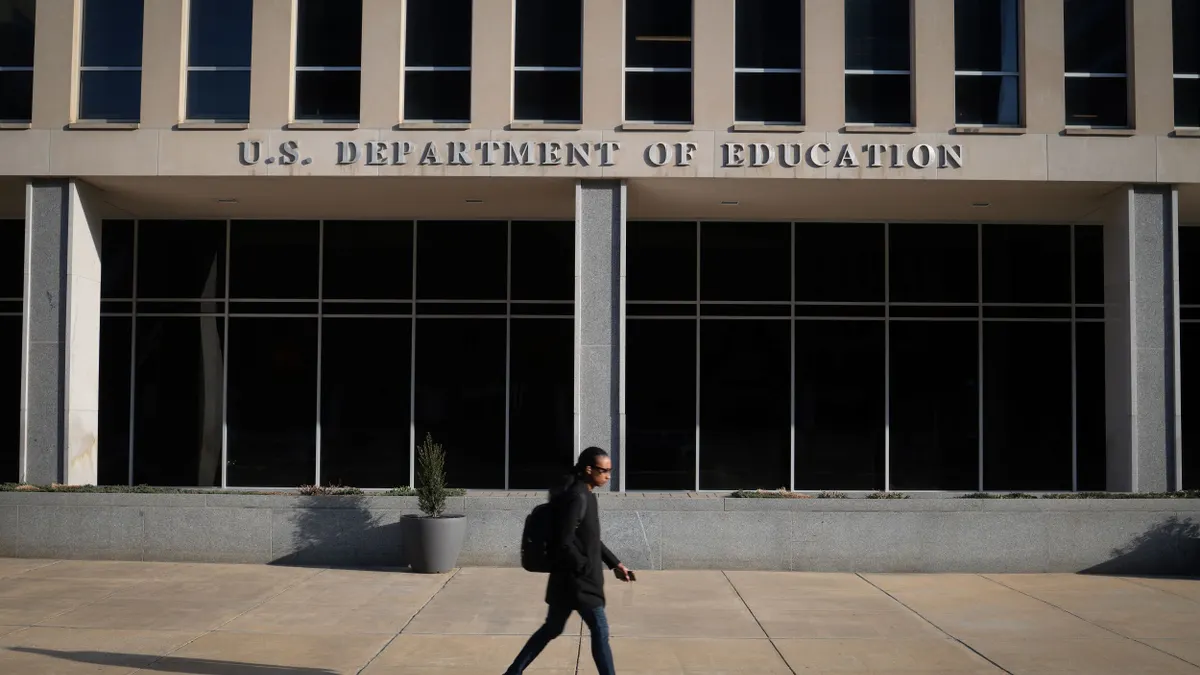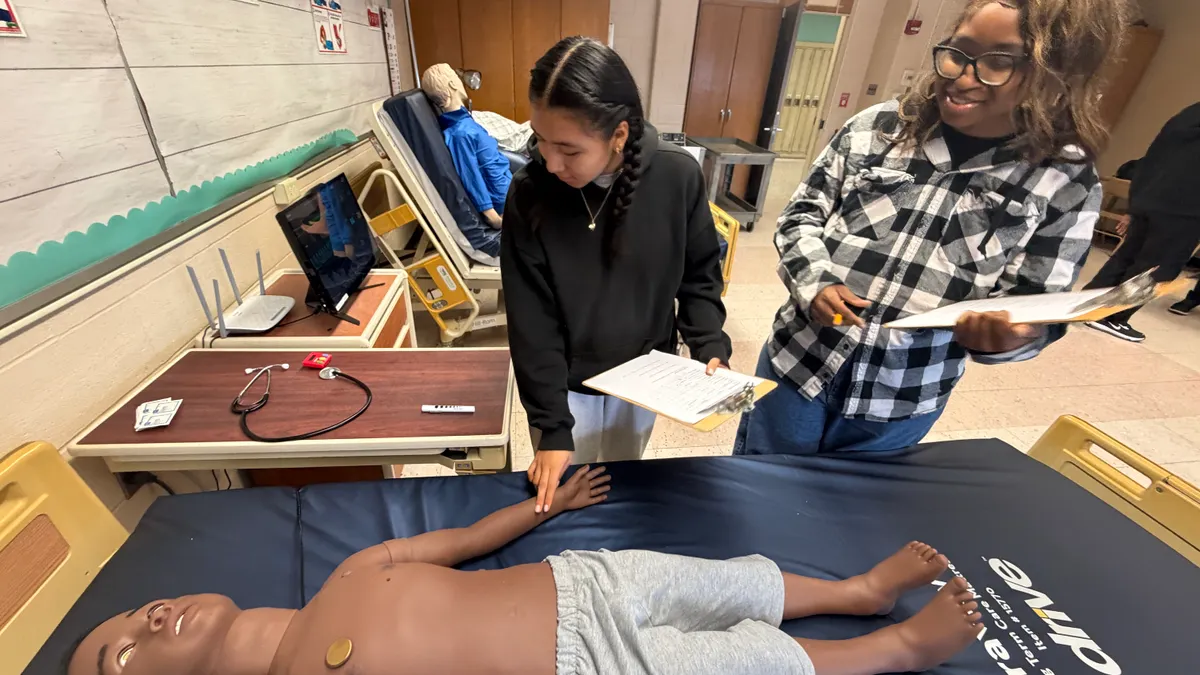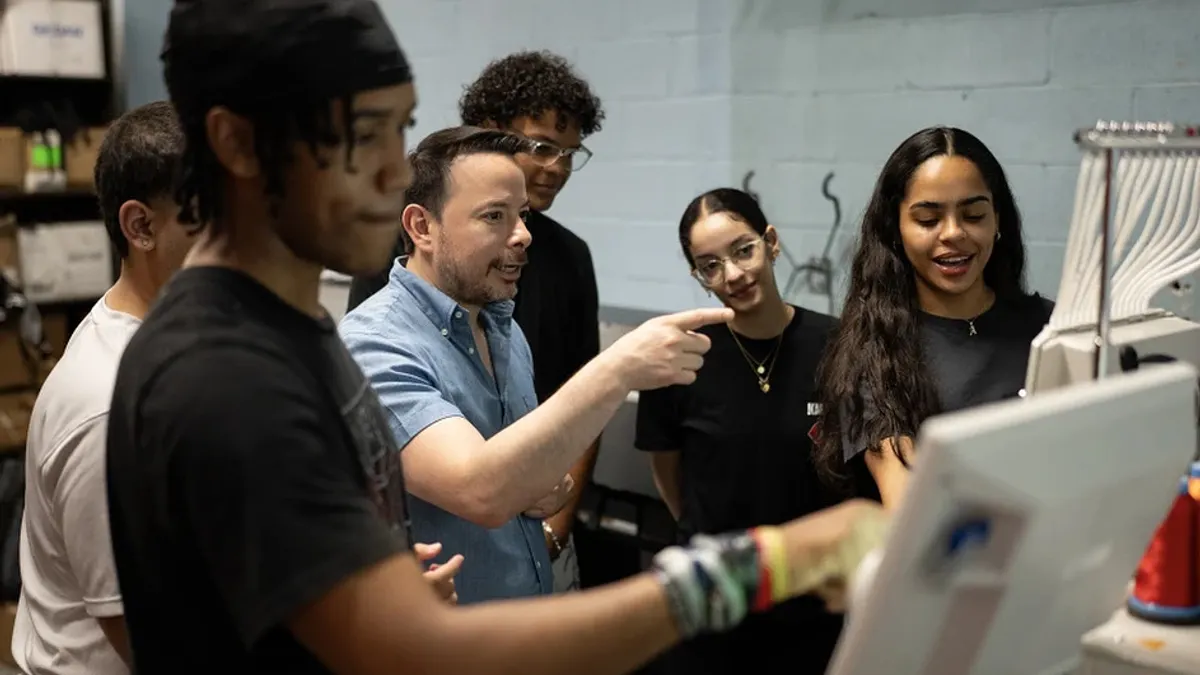When Tucson Unified School District (TUSD) started using gardening as part of its school curriculum, school leaders imagined science would be the main subject area that would fit with the lessons. They’re were intrigued, instead, when they found other subjects, from English language arts to math, also blended well.
“Surprisingly, language arts seems to be the low-hanging curriculum integration fruit,” Moses Thompson, school gardening counselor for Arizona’s TUSD wrote in an email. “English language learners can use the garden as an authentic context for conversation.”
TUSD’s gardening curriculum, which the district launched in 2014, grew as classroom teachers built lessons around core subjects. Elementary schools are what Thompson called the district’s “sweet spot,” but middle and high school students also take advantage of the gardens. The program at Tucson High Magnet School, is the most developed, said Thompson, where science, exceptional education and art teachers all work within the garden together.
Teaching students how to have a green thumb today has graduated far beyond sticking toothpicks in an avocado seed, plucking that in a cup of water and watching a bit of greenery grow. More than 25% of public elementary schools nationally had garden programs in their curriculum as of 2013, according to research from Bridging the Gap, a project funded by a grant from the Robert Wood Johnson Foundation. That’s a 133% increase from the 11.3% of elementary schools that had similar programs in 2007.
Schools may work with community partners to help handle funding, or apply for grants on their own, to help construct gardens even if these spaces are made up of pots, seeds and teachers eager to weave the natural world into the school day. For example, TUSD’s Thompson said schools in his district sometimes just need to buy grow lights to hang over a countertop garden, while others are able to allocate a budget of $4,000 for a planter garden with irrigation.
Denver Urban Gardens (DUG) offers its services and garden development to schools for free, and will work with schools to build anything from in-the-ground gardens, to using planters on casters, that can be moved around in a parking lot.
Mikhaela Mullins, DUG’s director of school garden programs, said that gardens can also be compost sites in a classroom. Rather than seeing the garden as a part of a beauty competition, the goal is to get students to view gardens as working labs, and to use them as extensions of the classroom.
“I like to think of it as a spectrum,” Mullins said in an interview. “So we can take them out into the garden, and have them do some writing, and at the other end of the spectrum they can be doing science experiments and math.”
Teachers can give math lessons by dividing up plots, asking students to find a volume or track plant growth over time. Science experiments can include learning about cover crops, and how they grow and impact the soil. Schools can also weave in literacy standards by having students write a poem from the perspective of a plant or bug.
Research points to how gardening can enhance academics in schools. A 2013 study from researchers at Portland State University notes that “…gardening may be an effective tool to supplement, enhance, or complement existing traditional curricula” when used to teach science, math and language arts, coupled with hands-on learning, wrote the paper’s authors.
DUG’s curriculum is primarily focused on elementary schools, but the group is looking to add middle schools to the mix in the future. Currently there are 65 schools involved in its program, where one-third of the garden space at a school site is devoted to classroom use, with the rest rented out to the community.
Mullins knows that crucial to DUG’s success is also buy-in from schools — and that requires teachers that are comfortable with the material and know how to integrate the garden space into their classrooms. That’s why DUG runs health educator workshops in which the group models practices for two- and four-hour classes. They can also run on-site workshops at schools if principals request, she said.
Professional development is also core to the Edible Schoolyard NYC, in which leaders meet with teachers during grade-level meetings at the group’s six school sites in the Bronx, Manhattan and Brooklyn. They talk about what’s coming up in teachers’ lesson plans and how to tie those topics into the gardens.
One project that could tie in social studies might focus on planting corn, beans and squash, called a Three Sisters Garden and a garden common to the Lenape Native Americans who once lived in Brooklyn. Another might have students use the square-foot gardening technique, where they put a different plant into each square foot of a garden.
Ultimately, no matter what the lesson plan, Jessie Tartanian, Edible Schoolyard NYC’s evaluation manager, said in an interview that students are more engaged, as are teachers, and the children get a chance to do some team learning, while also walking away with a willingness to try things, and even find some resilience and grit in themselves.
“We want to make learning stick, and talk a lot about stickiness to our staff,” said Tartanian. “Teachers also say the garden helps them see their kids shine, giving them a whole new view of their students.”


















